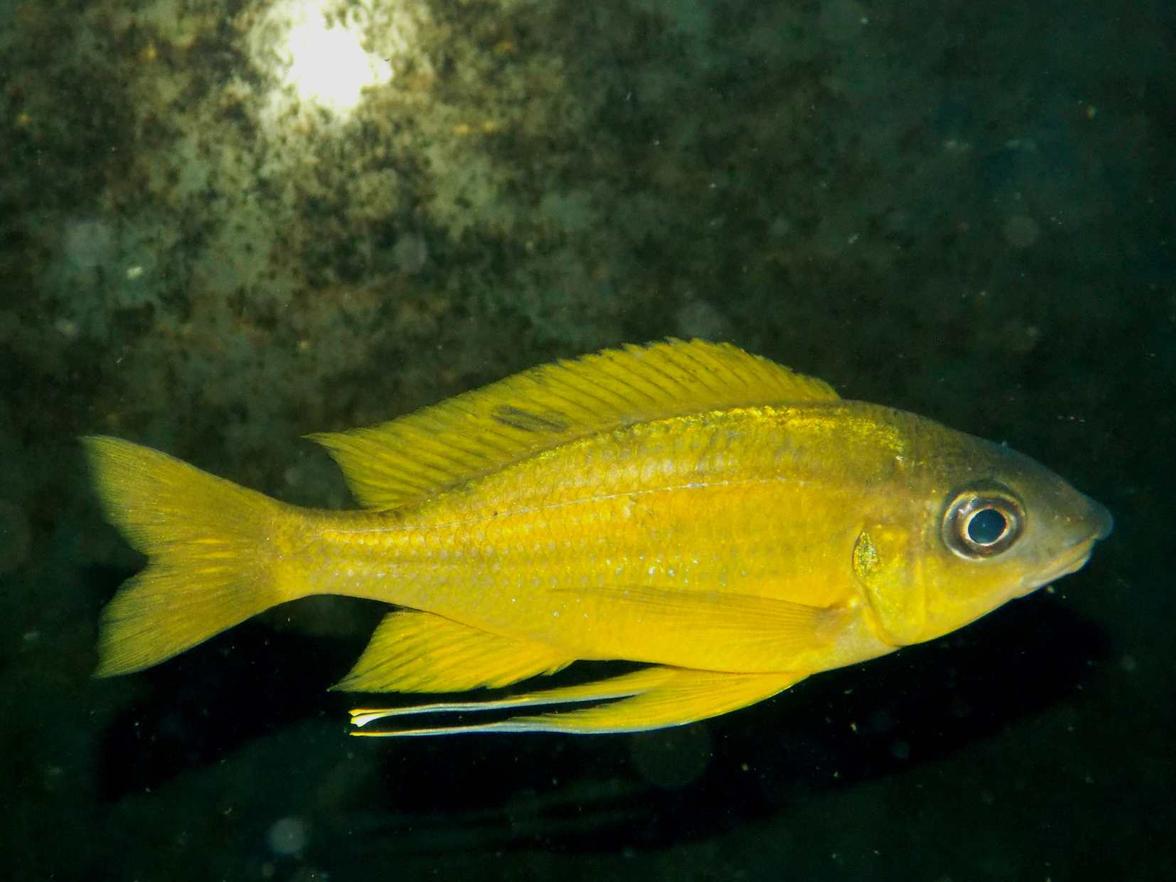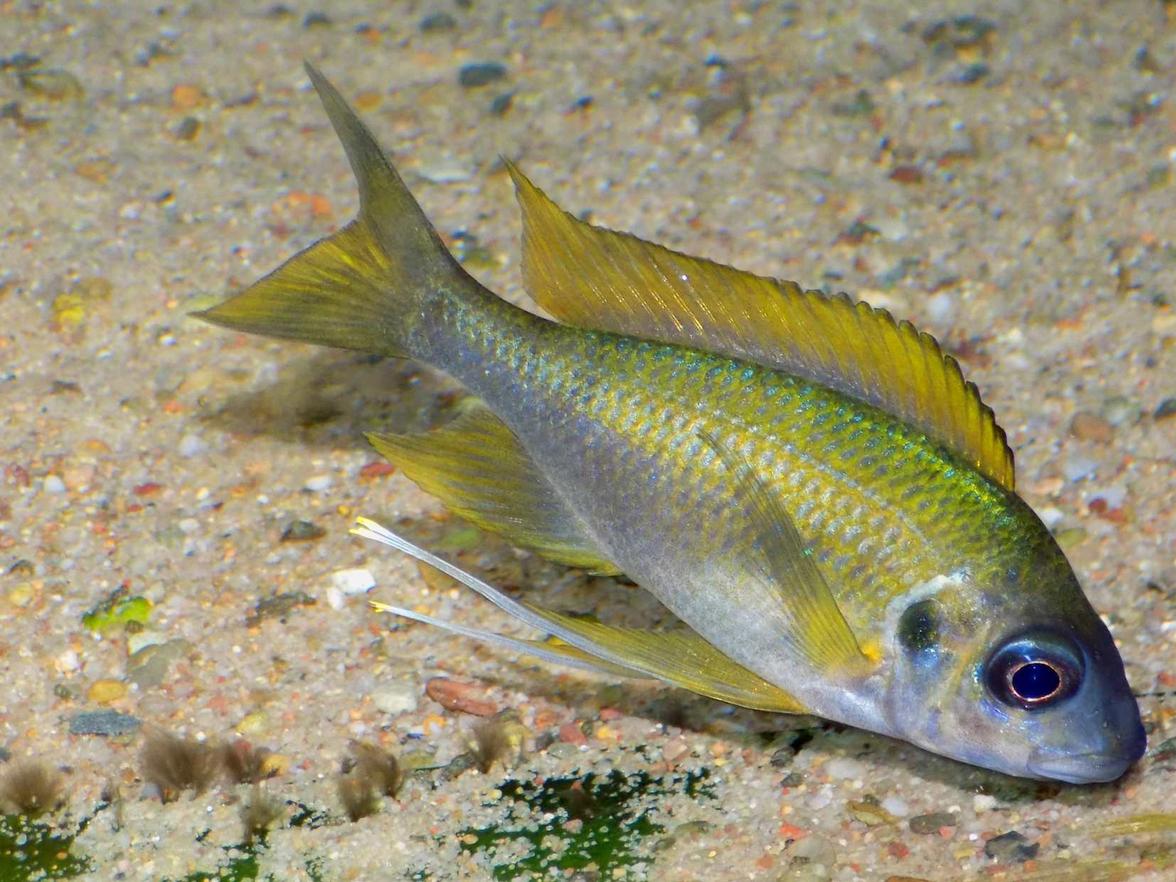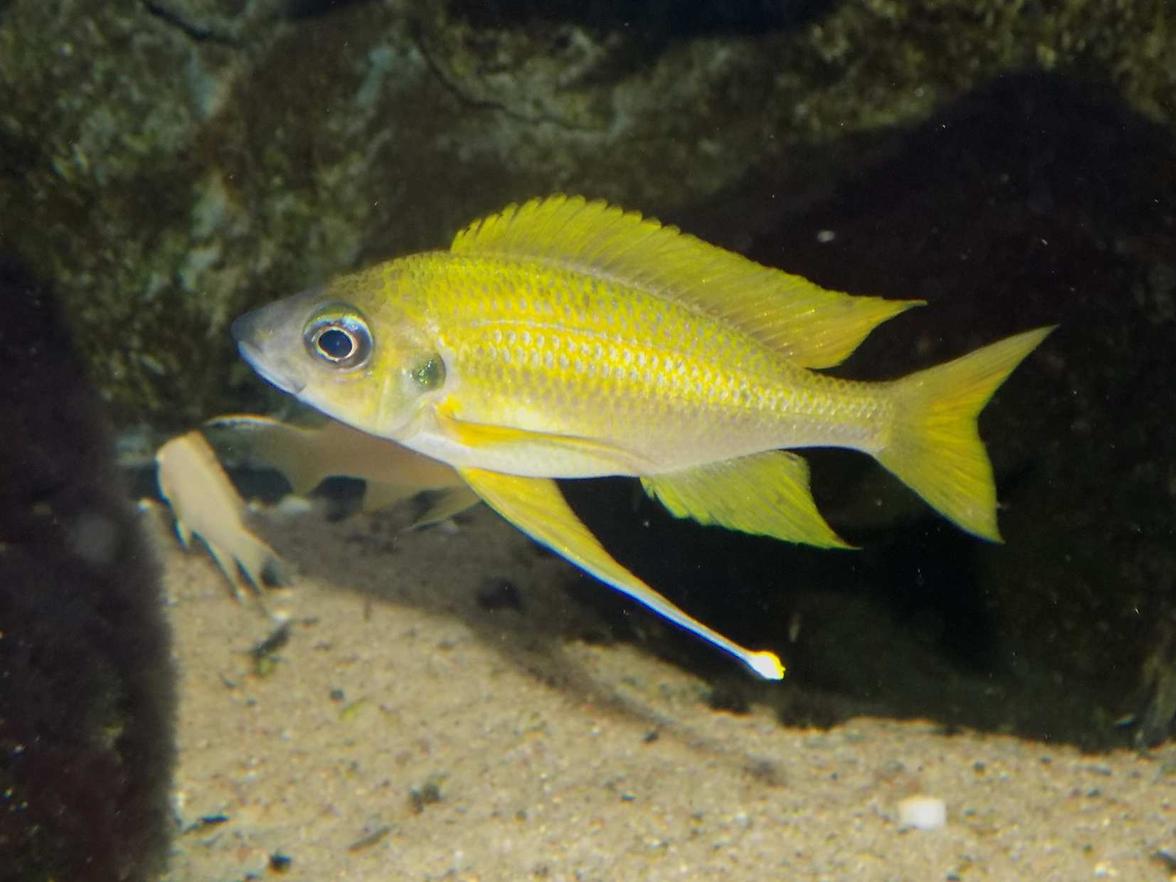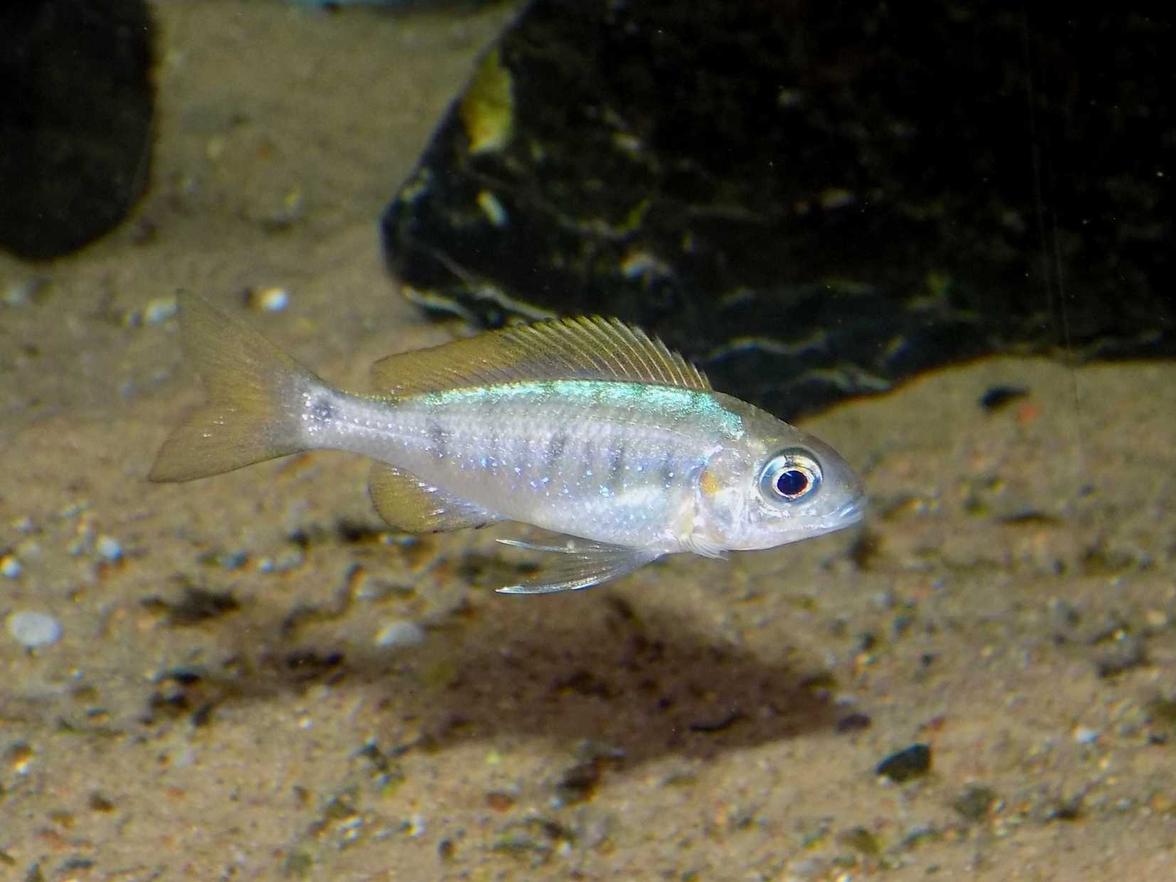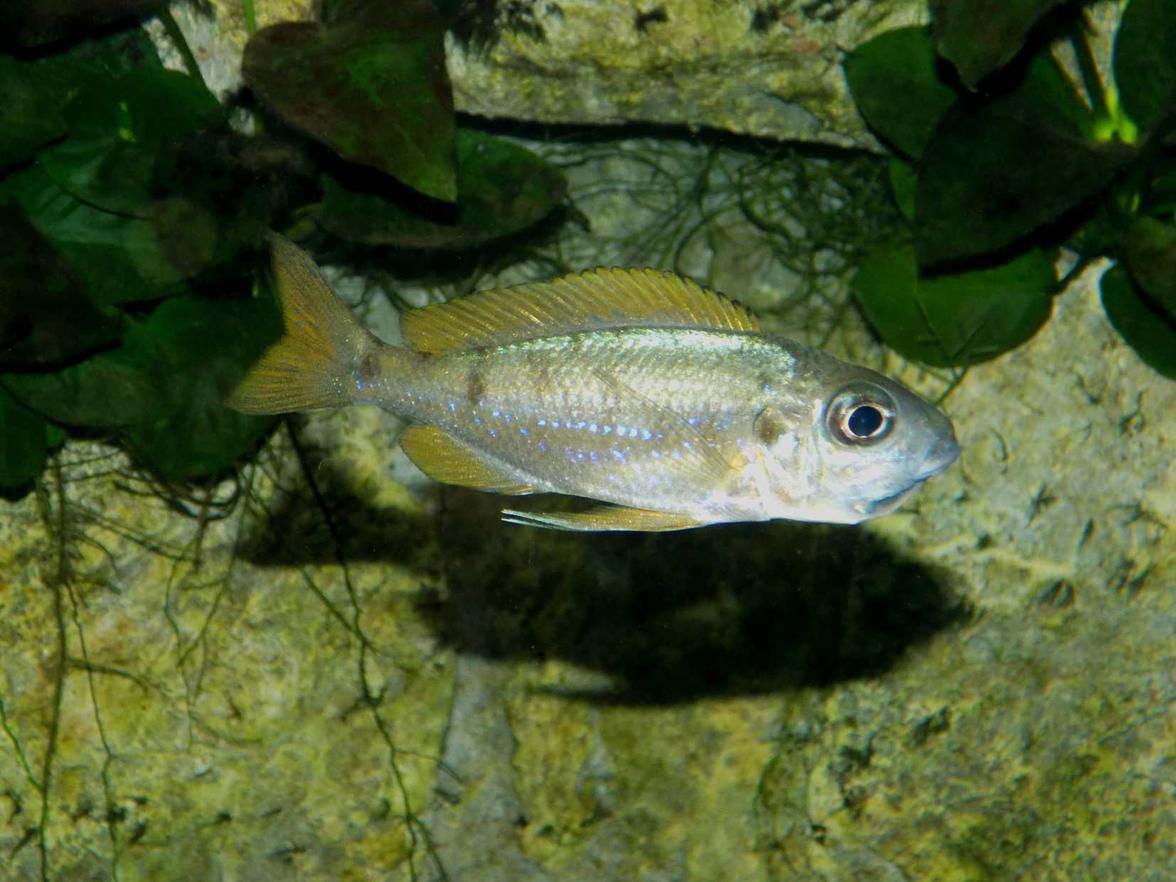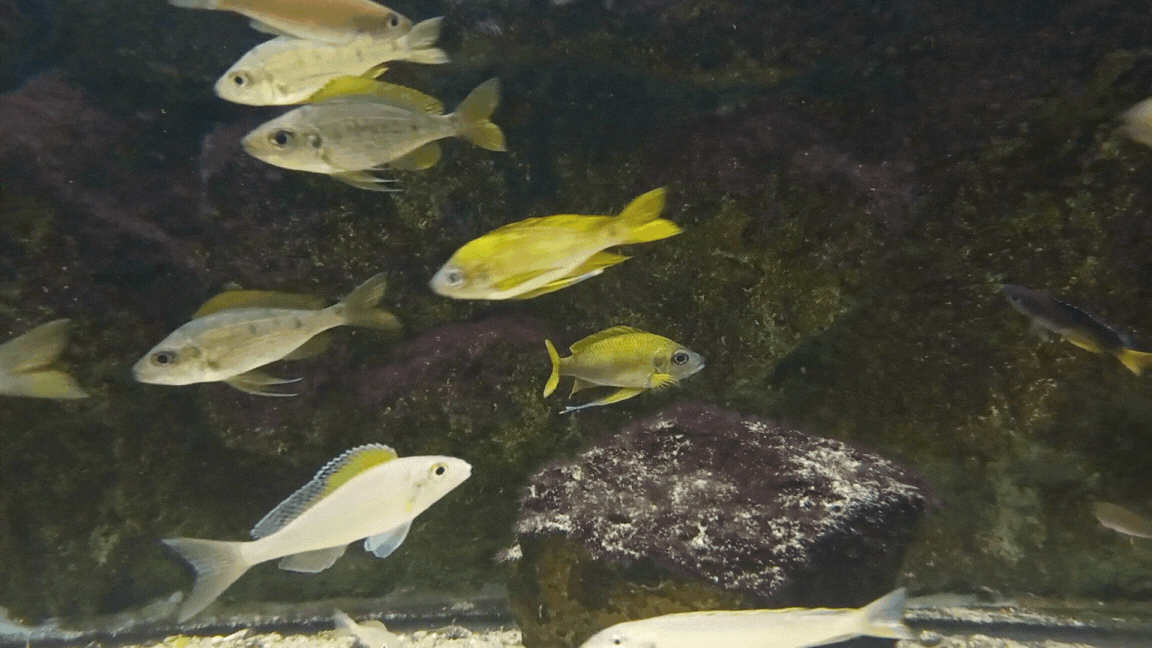This article deals with the breeding and life in nature of the cichlid Ophthalmotilapia nasuta, which originates from Lake Tanganyika in Africa. The reader will learn how this species behaves in its natural environment, what its habits are, and why aquarium breeding is ideal for this species.
Ophthalmotilapia nasuta is one of the four species of the genus Ophthalmotilapia, which are similar in body shape, nature, and coloration but differ. The other species are Ophthalmotilapia boops, Ophthalmotilapia heterodonta and Ophthalmotilapia ventralis. Fish from different locations vary in coloration. In Ophthalmotilapia ventralis, boops andheterodonta, they are most often blue-toned fish, while in Ophthalmotilapia nasuta, yellow coloration predominates. Of course, there are exceptions that confirm the rule, so a yellow Ophthalmotilapia may not always be Ophthalmotilapia nasuta.
Life in the lake
This species occurs only in Lake Tanganyika. Females are found in larger schools at depths of 3-10 m, while males are somewhat deeper, where they build nests of sand that have a diameter of about 30 cm and attract females ready to spawn. The nests of males are spaced two to three meters apart and form groups that can include several dozen males, similar to what can be seen in many other sand-dwelling cichlids from the lake. Spawning occurs in the usual manner as with other cichlids. They differ only in the absence of so-called egg spots on the anal fin, which many species have. In the genus Ophthalmotilapia these spots are replaced by elongated pectoral fins, at their ends are growths that imitate eggs.
The diet in nature consists largely of plankton, supplemented by insect larvae, which the fish search for in the substrate.
Breeding in the aquarium
Adult males are more brightly colored than females, have elongated dorsal fins, and grow up to 20 cm. Females are more modestly colored, do not have such distinctly elongated fins, and reach a smaller size (approximately 16 cm).
Ophthalmotilapia belongs to the so-called maternal mouthbrooders, which means that only females care for the offspring.
For breeding, I recommend a tank of at least 400L and at least 150 cm in length. Water parameters should be the same as for other species from Tanganyika - water temperature around 24-26 °C, nitrate levels ideally below 30 mg, and pH 8 and above. For feeding, I most often provide live or frozen plankton, artemia, daphnia, mosquito larvae, and every other day flake food.
My first experience with these fish came from purchasing a group of 3 males and 7 females of wild Ophthalmotilapia nasuta from Kipili, which are among the most yellow strains from the lake. After quarantine, I placed the fish in a tank measuring 250x80x60 cm in the company of Cyprichromis leptosoma and a few smaller species of the genus Neolamprologus. I don't know if it was because it was too small a group or because they were wild fish, but this group was very skittish, the females hardly managed to spawn, and over the course of three years, I gradually lost them.
In my next breeding attempt, I approached it differently and ordered an F1 group of 5 males and 11 females from the Isinga locality, which are also yellow. They are not as vibrant, have dark spots on their bodies, and change color according to mood from bright yellow to moss green. For their breeding, I chose a large community aquarium with dimensions of 300 x 80 x 60 cm, which currently houses them together with Enantiopus melanogenys Chituta andXenotilapia spilopterus Lyamembe anda group of Cyprichromis leptosoma Jumbo Moba.
This group has been very calm from the start, unlike the previous group. The two most dominant males occupy each corner of the tank, defending a territory of about 75 cm. The rest of the tank is inhabited by other males and females. Such cohabitation is completely peaceful. Although the males occasionally chase each other, there has never been any injury. Thanks to the really spacious tank, they also get along well with the males of Enantiopus melanogenys, who occupy the entire remaining bottom of the tank.
In smaller tanks, Enantiopus build nests around 30 cm, while for me, it is not unusual to have a nest with a diameter of 50-60 cm. Carrying females of Ophthalmotilapia nasuta easily produce broods that usually number 15-20 relatively large fry. I remove the fry from the females during tank maintenance, occasionally catching them already released at the surface of the aquarium.
Ophthalmotilapia very rarely predate their fry. I raise the fry in a separate tank, where they are initially fed artemia nauplii and gradually transition to live or frozen plankton, artemia, and flakes. The growth of the fry is relatively fast.
If the breeder avoids overstocking small fry, to which Ophthalmotilapia are sensitive, and avoids rough handling of adult fish, which often leads to damage to the eyes (known in similar fish of the genus Cyathopharynx), then they are relatively robust and resilient fish.
Ophthalmotilapia nasuta are, after meeting the basic breeding conditions, an unmistakable dominant in spacious tanks due to their size and coloration.
